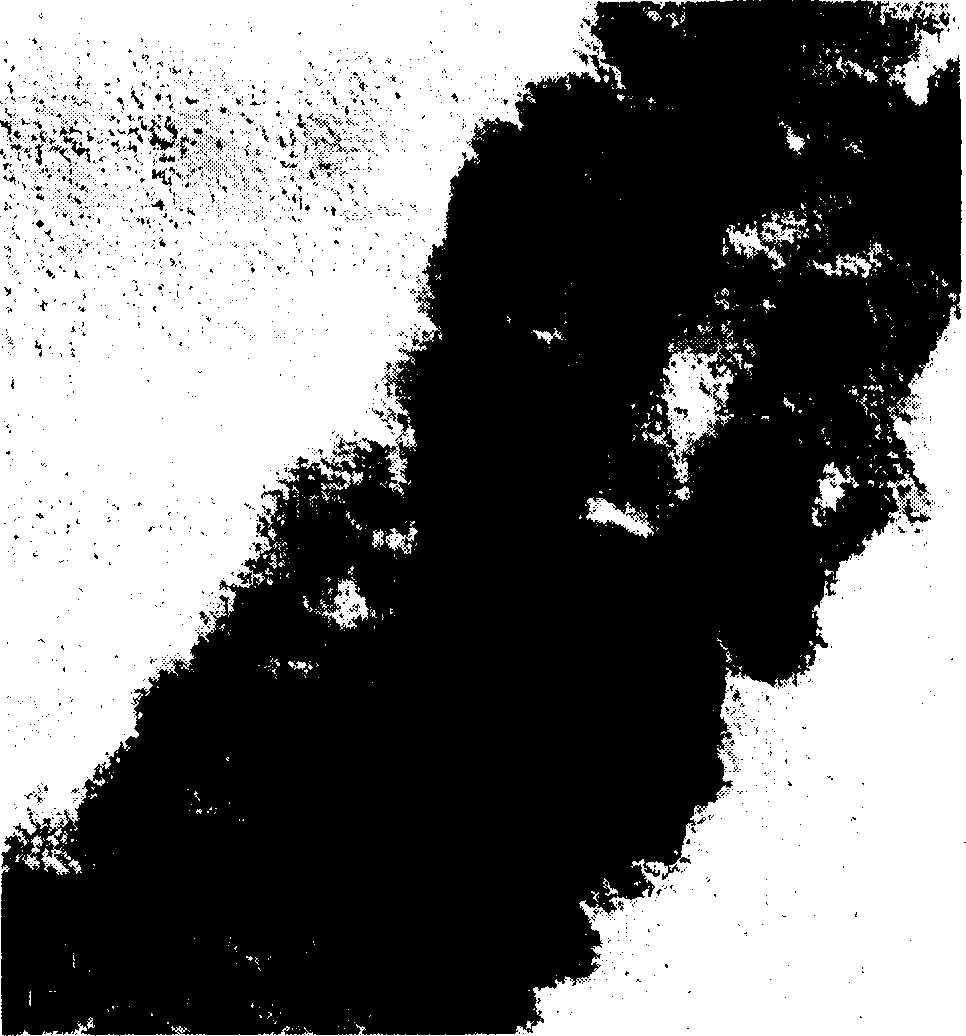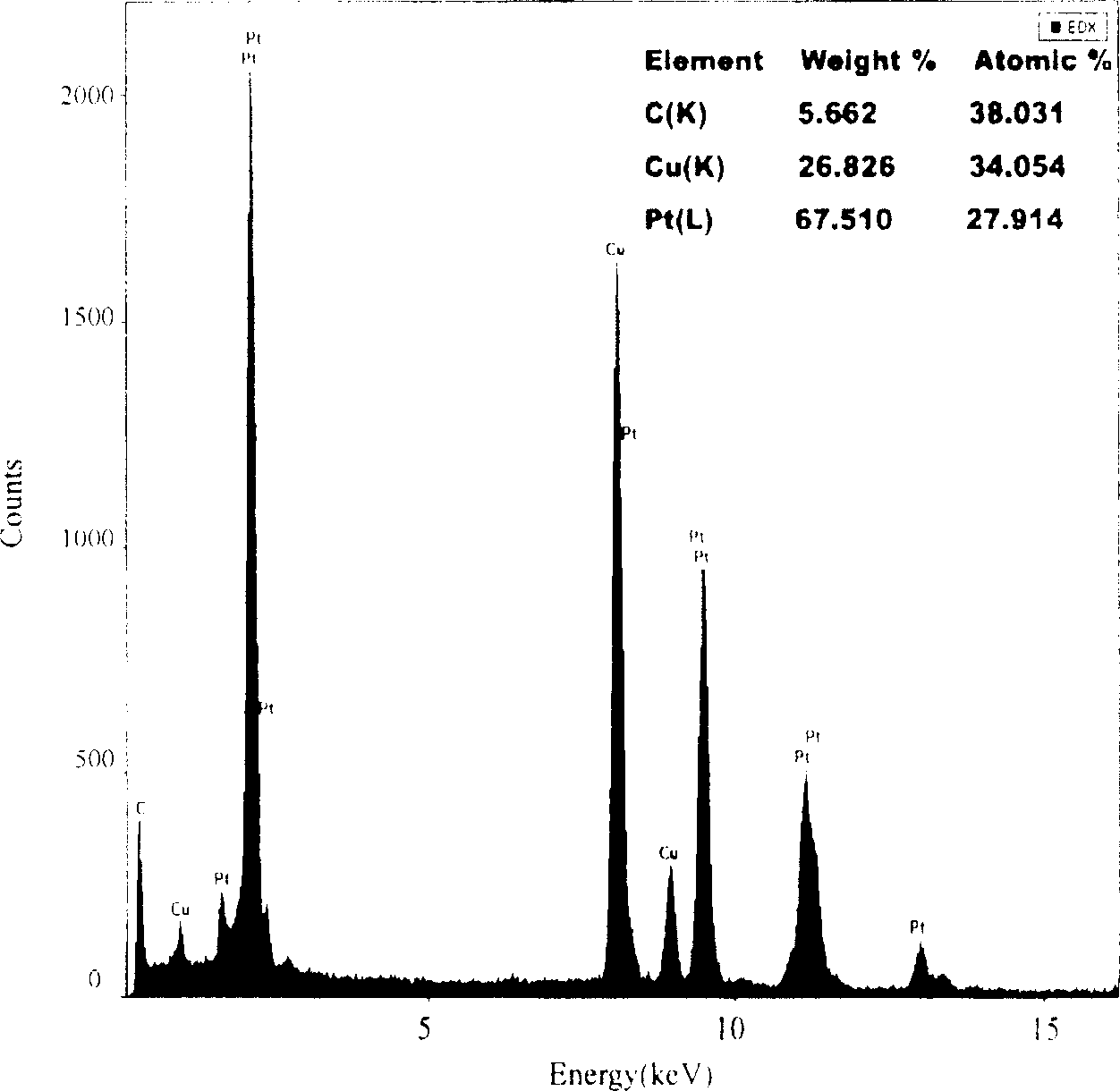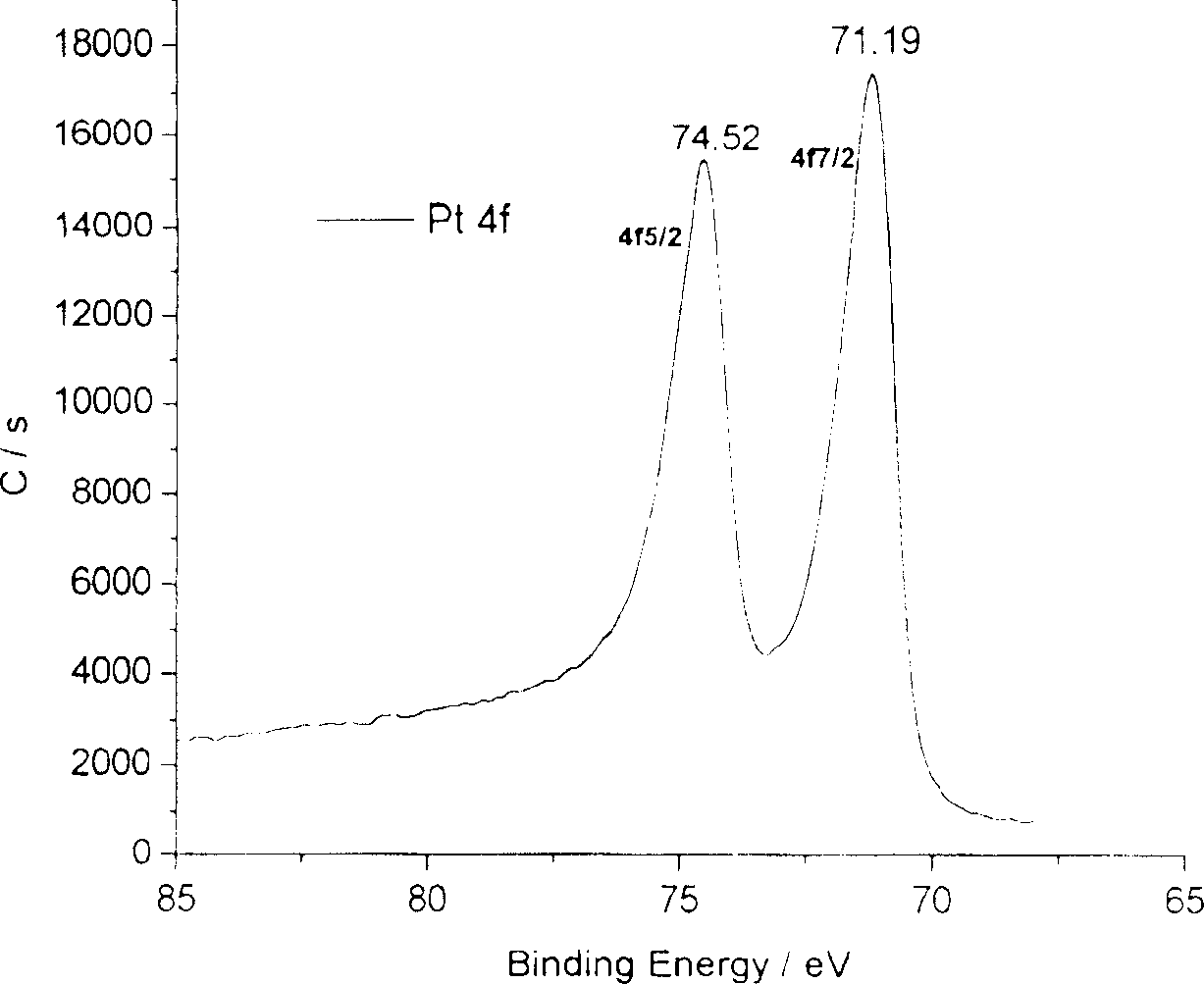Method of depositing high density loading metal platinum on carbon nanometer pipe surface using oriented chemistry
A carbon nanotube and metal-loaded technology, which is applied in chemical instruments and methods, catalyst carriers, chemical/physical processes, etc., can solve the problems of low loading rate, limited prospects, and high cost, and achieve uniform distribution, excellent performance, and high platinum The effect of load ratio
- Summary
- Abstract
- Description
- Claims
- Application Information
AI Technical Summary
Problems solved by technology
Method used
Image
Examples
Embodiment 1
[0014] Embodiment 1: 1) surface oxidation treatment of nanotubes: 1 gram of purified single-walled carbon nanotubes (provided by the Metal Institute of the Chinese Academy of Sciences) or multi-walled carbon nanotubes (provided by the Department of Chemistry, Xiamen University) was added to a round bottom flask, and then Add 200 ml of 2.6M nitric acid, heat to boil, reflux for about 4 hours, then filter, wash with water until neutral, and dry at 150°C for 2 hours to obtain a surface oxidized carbon nanotube sample for future use.
[0015] 2) Nanotube-supported platinum nanoparticles: add 0.1 g of carbon nanotubes after surface oxidation treatment, 0.1 g of dodecyltrimethylammonium bromide, 0.1 g of chloroplatinic acid and 1000 ml of ethylene glycol in a round bottom flask , After ultrasonic dispersion, the round bottom flask was placed in an oil bath, heated and stirred, and the reaction was stopped after 2 hours of reaction.
[0016] 3) The product was centrifuged, washed wit...
Embodiment 2~8
[0020] The method for loading platinum nanoparticles on nanotubes is the same as in Example 1, and the remaining conditions and results are shown in Table 1:
[0021] Reality
Shi
example
carbon nanotubes
A
Surfactant
B
platinum salt
C
warm
Spend
(℃)
reaction
time
h
Time)
Ethylene glycol
Platinum loading
Rate
(%)
grain level
Inch
(nm)
kind
kind
content
(gram)
kind
kind
contain
quantity
(gram)
kind
kind
contain
quantity
(gram)
1
A1
0.1
B1
0.1
C1
0.1
170
2
1000mL
50
5
2
A1
10
B2
5
C2
2.5
130
1.5
1000mL
20
3
3
A1
9
B5
10
C1
1
...
PUM
| Property | Measurement | Unit |
|---|---|---|
| particle size | aaaaa | aaaaa |
Abstract
Description
Claims
Application Information
 Login to View More
Login to View More - R&D
- Intellectual Property
- Life Sciences
- Materials
- Tech Scout
- Unparalleled Data Quality
- Higher Quality Content
- 60% Fewer Hallucinations
Browse by: Latest US Patents, China's latest patents, Technical Efficacy Thesaurus, Application Domain, Technology Topic, Popular Technical Reports.
© 2025 PatSnap. All rights reserved.Legal|Privacy policy|Modern Slavery Act Transparency Statement|Sitemap|About US| Contact US: help@patsnap.com



